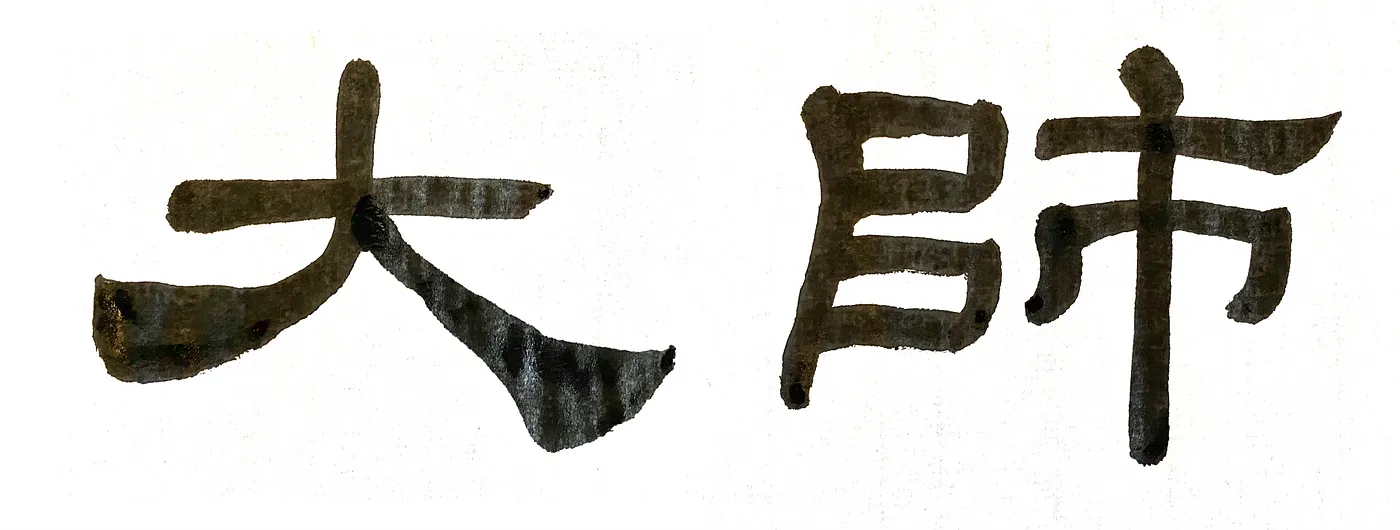
大師, pronounced as “Da Shi”, means “master”; written in Clerical script
Since I already mentioned quite a few of the most accomplished calligraphy masters in early Chinese history in past articles, here I focus on sharing modern and contemporary Chinese calligraphy masters. This is by no means a comprehensive or ranked list, but rather some personal favorites. I also tried to pick as diverse a combination as possible, in the hopes of showing a wider perspective of how Chinese calligraphy has and continues to evolve.
Modern Masters
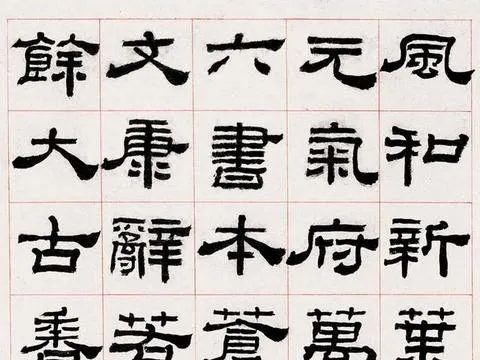
Clerical script work by 丁念先 Ding Nianxian
丁念先 (Ding Nianxian) was a master in Clerical script, and a lifelong educator and promotor of Chinese culture, calligraphy, painting and literary traditions. Born in 1906 in Zhejiang, China, Ding lived through the overthrowing of the Qing Dynasty, the Chinese Civil War and Second World War, and moved to Taiwan in 1949 along with the relocation of the KMT party.
He had extensive impact on furthering Chinese painting and calligraphy in both China and Taiwan, through his work in the education department in the government, starting and leading local arts clubs and publications, and teaching and research. He was also known for inspiring and recognizing the importance of folk artists in educating the masses, and their ability to reach a wide and constantly changing audience through their works.
His Clerical script writings have sturdy foundations, yet are lively and playful at the same time. He worked extensively with, and his clerical script works were heavily influenced by the 乙瑛 (Yi Ying), 史晨 (Shi Chen) and 華山 (Hua Shan) inscriptions.
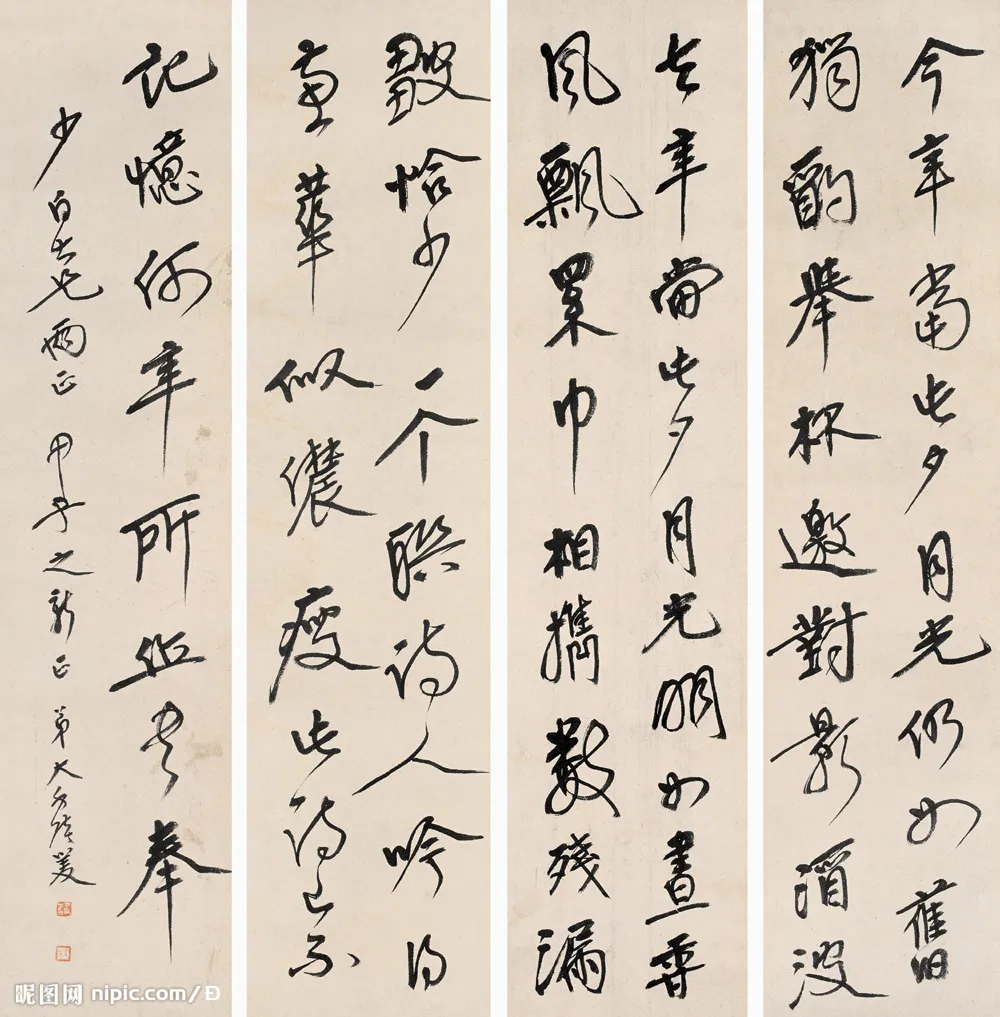
Cursive by 張大千 Zhang Daqian (Image Source)
張大千 (Zhang Daqian) is one of the most renowned modern Chinese artists. His Chinese paintings are famous worldwide, and you can learn more about that here. Though lesser known, he’s an equally accomplished Chinese calligrapher.
A few interesting facts about his calligraphy practice:
In his early years, his calligraphy was deeply influenced by 李瑞清 (Li Ruiqing) and 曾農髯 (Zeng Nongran), two accomplished calligraphers in the late 19th century. Zhang was so good at imitating others’ works, such that even those close to these two calligraphers couldn’t tell apart their works from Zhang’s.
Zhang also sought out and copied other masterpieces relentlessly, resulting in his mastery in the craft. Similar to Ding Nianxian, they are both rooted in tradition, and later on, through assimilating other influences, created their own unique styles.
Calligraphy is an integral part of Chinese painting, and the two practices have many similarities in terms of stroke techniques. Hence we can see elements of Zhang’s paintings in his writing as well — his calligraphy tend to be more picturesque and full of life, and seem to tell a story on their own aside from the literal meaning of the characters. His work exemplifies his belief that art should be an expression of emotions, and the embodiment of one’s personalities.
Contemporary Masters
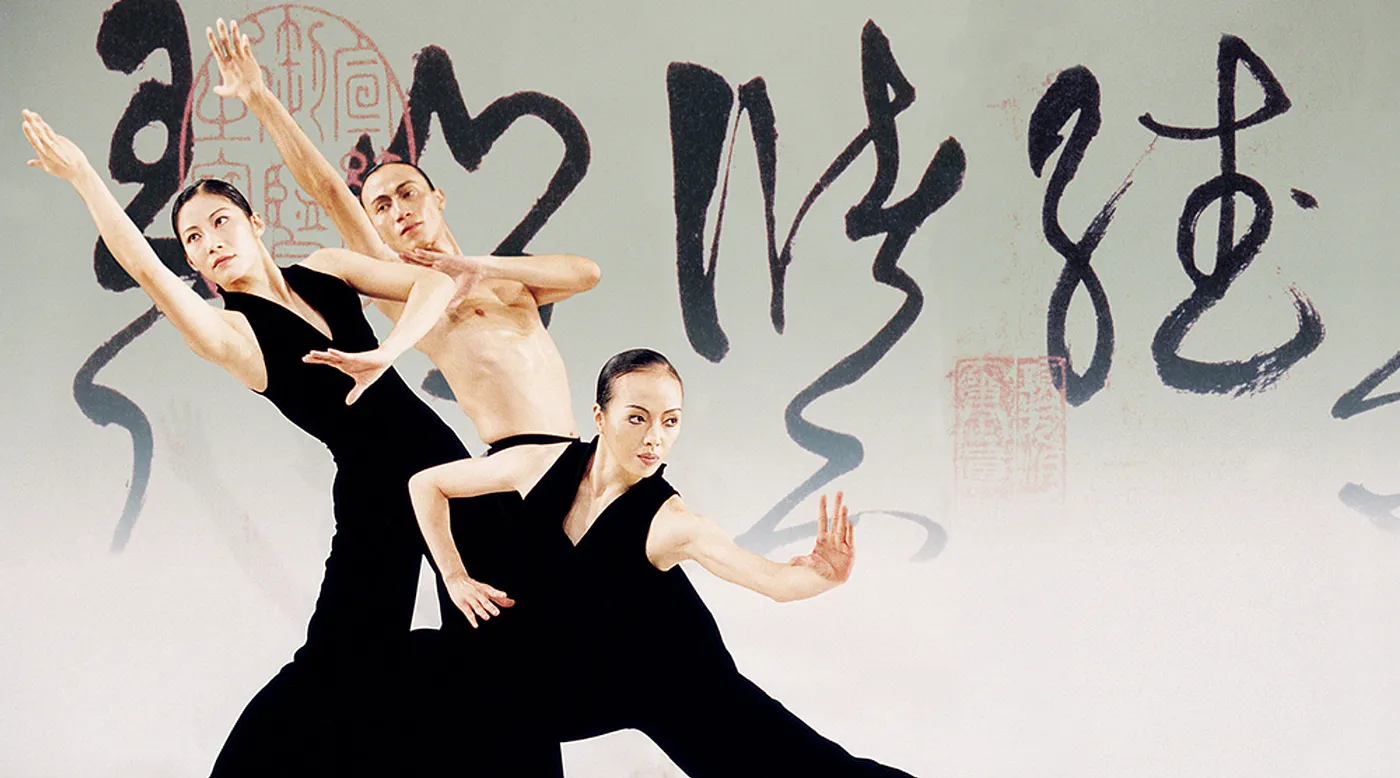
Cursive 行草 — a dance production by Cloud Gate Dance Theater, in collaboration with 董陽孜 Tong Yang-tze
董陽孜 (Tong Yang-tze) is one of the foremost Chinese calligraphers in Taiwan. Aside from her training in Chinese calligraphy, she also earned degrees in fine arts in both Taiwan and the United States, and had experience working as a graphics designer in New York. Her calligraphy work merges elements from all these different backgrounds, gives new life to this tradition, and helps define what modern Chinese calligraphy is.
She is known for her large scale works and cross-field collaborations. Just to give a few examples, check out her collaboration with Taiwan’s Cloud Gate Dance Company, where the dancers’ movements mimic the rhythm and flow of calligraphy strokes (as shown in the image above, and you can view this video to see a snippet of the performance); 讀衣(pronounced as “du yi”, the literal translation being “to read clothing”), an exhibition in collaboration with budding Taiwanese fashion designers, to design clothes that uses the shape and form of calligraphy strokes as a starting point (you can find many pictures of the final designs here); and most recently her installation in the newly completed M+ Museum in Hong Kong, featuring her signature cursive styles written in broad and rugged strokes.
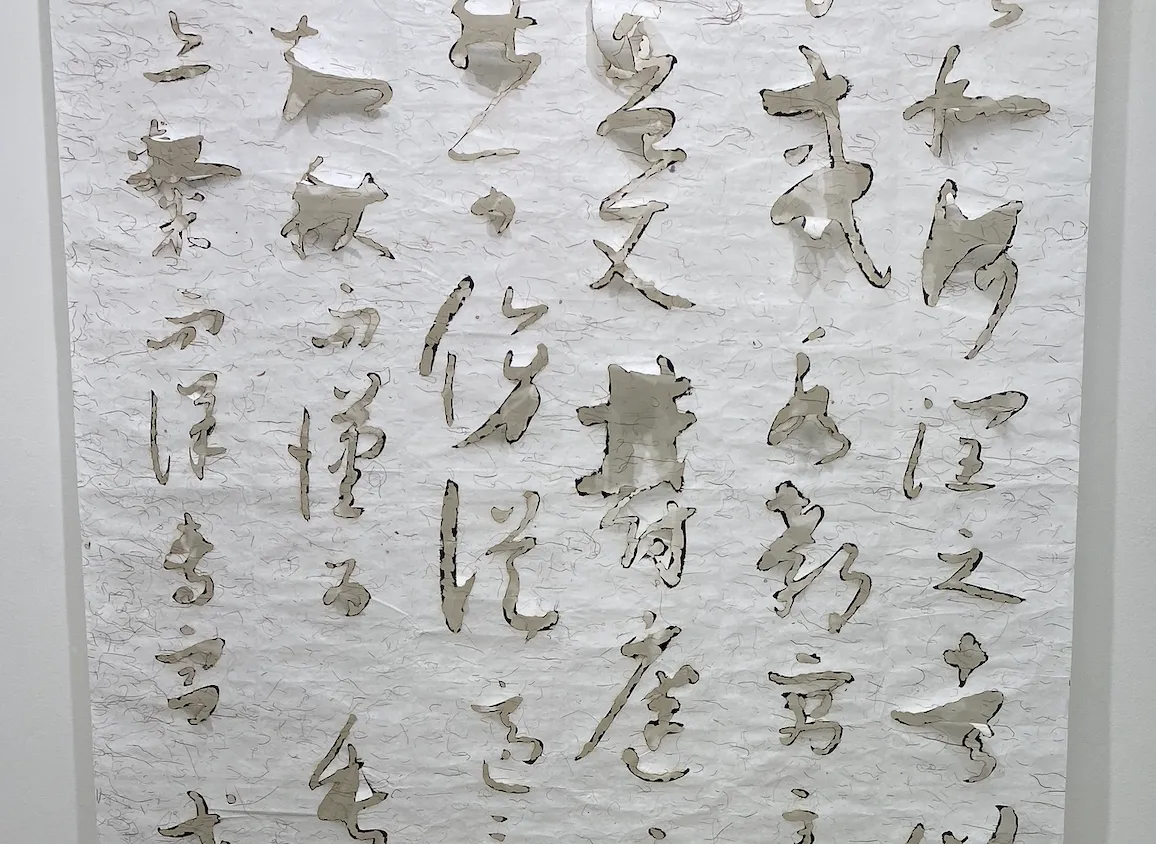
王天德 (Wang Tiande), similar to Zhang Daqian, is prolific in both Chinese painting and calligraphy. He has formal training in both fine arts and calligraphy, and is currently a professor at the Fudan University in Shanghai.
He is known for incorporating the burned effects of rice paper (created using cigarettes or incense sticks), into both his landscape paintings and calligraphy works. He often juxtaposes these burnt works with copies of historic masterpieces and inscriptions, contrasting fleetingness and timelessness, and encourages the viewer to ponder the meaning of creation and destruction.
That’s a wrap of the brief introduction to four of my favorite modern and contemporary masters. Even though Chinese calligraphy is no longer as widely practiced, it is touching to see how, through the creativity of these artists, the essence and beauty of this tradition continues to live on in different forms and new mediums. It’s on you and me now, to carry the torch and take on the job of redefining the meaning of modern Chinese calligraphy.